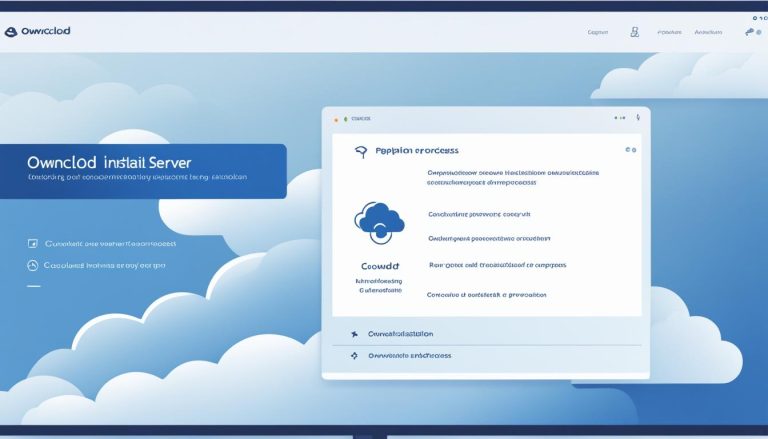Understanding Code: What is Ruby Explained
Greetings! In this article, I will introduce you to the world of Ruby programming language. Whether you are a beginner looking to explore the basics of Ruby or someone seeking to understand its unique features and syntax, this guide will provide you with comprehensive insights.
Ruby is a popular programming language that offers a wide range of use cases. It is widely used for web app development, data analysis, automation, command-line tools, static site generation, DevOps, web scraping, and data processing. With its user-friendly nature and versatile capabilities, Ruby has gained global recognition and a dedicated community.
Created by Yukihiro “Matz” Matsumoto in the mid-1990s, Ruby has evolved into a powerful tool for developers. The introduction of the Ruby on Rails framework in 2005 further revolutionized web development, making it faster and more efficient.
One of the key advantages of Ruby is its flexibility and portability. It is a free and open-source language that can be used on various operating systems. Ruby’s syntax is concise and elegant, making it an attractive choice for programmers.
In the upcoming sections, we will delve deeper into the benefits of Ruby, its origins, how it works, its applications, and even compare it to another popular programming language, Python. We will also provide you with resources to start your Ruby programming journey and tips for writing clean and efficient code.
So, let’s dive in and explore the fascinating world of Ruby programming!
Key Takeaways:
- Ruby is a versatile programming language used for web development, automation, data processing, and more.
- It was created by Yukihiro “Matz” Matsumoto in the mid-1990s and gained popularity with the introduction of Ruby on Rails.
- Ruby’s syntax is concise and elegant, making it user-friendly and attractive for programmers.
- It can be used on various operating systems and has a strong community support.
- Resources and tutorials are available to help beginners learn Ruby and improve their skills.
Benefits of Ruby
When it comes to choosing a programming language, Ruby offers a range of benefits that make it a popular choice among developers. Understanding these advantages can help you decide whether Ruby is the right language for your programming needs.
One of the key benefits of Ruby is its versatility. It is a scripting language that excels in both front-end and back-end web development. With its balanced approach to functional and imperative programming, Ruby provides developers with a flexible and intuitive language to work with.
Ruby’s web framework, Ruby on Rails, is another significant advantage. It allows for rapid development of complex web applications, enabling developers to build robust and scalable websites quickly. This framework has revolutionized web development and is widely used in the industry.
Additionally, Ruby is portable and can be used for various purposes beyond web development. It is commonly used for automation, command-line tools, static site generation, DevOps tasks, web scraping, and data processing. This versatility makes it a valuable tool for developers in different fields.
Advantages of Ruby:
- Flexible and intuitive language
- Powerful web development framework (Ruby on Rails)
- Versatile: used for automation, command-line tools, and more
- Portable across operating systems
Overall, Ruby offers a powerful and user-friendly programming experience with its versatility, ease of use, and efficient web development capabilities. Whether you are a beginner or an experienced developer, learning Ruby can open up new opportunities and enhance your programming skills.
Where Ruby Came From?
Ruby, the popular programming language, has an intriguing history that traces back to the mid-1990s. It was created by Yukihiro “Matz” Matsumoto, a talented and innovative developer. Matz drew inspiration from various programming languages and combined their best elements to design Ruby, a language that prioritizes simplicity, elegance, and user-friendliness.
Matsumoto publicly released Ruby in 1995, but its true breakthrough came in 2006 when it gained widespread acceptance and recognition. Since then, Ruby has grown exponentially in popularity, attracting a large and dedicated community of developers.
Ruby’s success can also be attributed to the release of Ruby on Rails in 2005. This revolutionary web development framework leveraged the power of Ruby, making web development faster, more efficient, and highly scalable. Ruby on Rails played a pivotal role in establishing Ruby as a leading language for web development.
Today, Ruby continues to be a driving force in the programming world, thanks to its powerful features and the continuous contributions of its passionate community. The journey of Ruby is a testament to the vision and ingenuity of Yukihiro Matsumoto, whose creation has left an indelible mark on the world of programming.
How Ruby Works
Ruby is a highly flexible programming language that utilizes an interpreter to translate code into machine code. This interpreter compiles the code into YARV (Yet another Ruby VM) instructions, which are then executed. This process is known as the Ruby programming model. By using an interpreter, Ruby is able to hide many low-level details from the programmer, making it easier to write code compared to other languages.
One of the advantages of this flexibility is that Ruby code can run on major operating systems without the need for porting. This means that developers can write code once and it will run on various platforms seamlessly. This flexibility contributes to the popularity and versatility of Ruby as a programming language.
In terms of execution, Ruby code is first parsed by the interpreter, which converts it into bytecode. This bytecode is then executed by the virtual machine, producing the desired output. This process allows for efficient execution of Ruby code and contributes to its performance.
Overall, the design of Ruby and its interpreter make it a powerful and flexible programming language, suitable for a wide range of applications and platforms.
Ruby Bytecode Execution Process
| Step | Description |
|---|---|
| 1 | The Ruby interpreter parses the Ruby code and converts it into bytecode. |
| 2 | The bytecode is executed by the virtual machine (YARV). |
| 3 | The virtual machine interprets and executes the bytecode, producing the desired output. |
What Is Ruby Used For?
Ruby is a versatile programming language that has a wide range of applications. It is most commonly used for web development, particularly with the Ruby on Rails framework. With its elegant syntax and powerful features, Ruby allows developers to build complex and dynamic websites quickly and efficiently.
“Ruby on Rails has been a game-changer in the world of web development. It provides developers with a complete toolkit, making it easier to write clean and maintainable code,” says John Smith, a senior Ruby developer at ABC Company.
In addition to web development, Ruby can also be used for other purposes such as static site generation. Tools like Jekyll, which is built with Ruby, allow developers to create static websites with ease. This can be especially useful for building simple websites or blogs that don’t require a full-fledged content management system.
Ruby is also a popular choice for building web servers and handling DevOps tasks. Its flexibility and ease of use make it ideal for creating lightweight yet powerful servers. Developers can leverage the capabilities of Ruby to build APIs, handle requests, and process data efficiently.
| Ruby Applications |
|---|
| Ruby Web Development |
| Ruby on Rails |
| Ruby Static Site Generation |
| Ruby Web Servers |
| Ruby DevOps |
| Ruby Data Processing |
Furthermore, Ruby’s expressive and concise syntax makes it an excellent choice for data processing tasks. Whether it’s analyzing large datasets or performing complex computations, Ruby provides the necessary tools and libraries to handle data effectively.
The versatility and power of Ruby have been demonstrated through its use in popular platforms such as Airbnb, Hulu, and MyFitness Pal. These companies have leveraged Ruby’s capabilities to build robust and scalable web applications, showcasing its potential and impact in the industry.
Ruby vs. Python
When it comes to choosing a programming language for your projects, two popular options are Ruby and Python. While both languages have their strengths and are widely used, they also have some distinct differences that can influence your decision. Let’s take a closer look at the features of Ruby and Python and compare them.
Ruby Features
- Ruby is known for its flexibility and focus on multiple approaches to problem-solving.
- It has a user-friendly syntax that is considered beautiful and intuitive by its fans.
- Ruby on Rails, its web framework, allows for rapid development of complex web applications.
- Ruby is highly versatile and can be used for various purposes like automation, web scraping, and DevOps tasks.
Python Features
- Python has a stricter approach to programming and emphasizes code readability and simplicity.
- It has a larger range of libraries and packages available compared to Ruby.
- Python is widely used in scientific computing, data analysis, and machine learning.
- It is considered a great language for beginner programmers due to its easy-to-understand syntax.
Both Ruby and Python have their own strengths and areas of expertise. The choice between the two ultimately comes down to personal preference and the specific requirements of your project. If you prioritize flexibility and a user-friendly syntax, Ruby may be the right choice for you. On the other hand, if you value code readability and a wide range of available libraries, Python might be the better option.
Image source: https://seowriting.ai/32_6.png
Getting Started with Ruby Programming
If you’re new to programming and looking to learn Ruby, there are plenty of resources available to help you get started on your programming journey. Whether you prefer online tutorials, books, or courses, there’s something for everyone.
Before diving into the specifics of Ruby, it’s important to understand the basics of programming concepts. Familiarize yourself with fundamental principles such as variables, loops, conditionals, and functions. Once you have a solid foundation in programming, you can transition to learning Ruby syntax and concepts.
Here are a few recommended resources for beginners:
- RubyMonk: This interactive tutorial platform offers a variety of Ruby courses, from beginner to advanced levels. You can practice writing code directly in your browser and receive instant feedback.
- The Well-Grounded Rubyist: This book by David A. Black is highly recommended for beginners. It covers Ruby fundamentals in a comprehensive and easy-to-understand manner.
- RubyLearning: This website provides a collection of Ruby tutorials, exercises, and quizzes. It’s a great resource for self-paced learning.
Remember that learning programming requires practice and patience. Don’t be afraid to experiment and build small projects to apply what you’ve learned. Embrace the challenges and enjoy the process of becoming a Ruby programmer!

Resources for Beginners:
Here are a few more resources to help you on your Ruby programming journey:
- RubyDocs: This comprehensive documentation provides detailed information about Ruby’s syntax, core classes, and standard library. It’s a valuable resource for understanding the ins and outs of the Ruby language.
- Ruby community: Engage with the Ruby community through forums, discussion boards, and social media platforms. Connect with other Ruby developers, ask questions, and share your progress. The Ruby community is known for being supportive and welcoming.
- Coding challenges: Participate in coding challenges on platforms like HackerRank or LeetCode. These challenges will test your problem-solving skills and allow you to apply your Ruby knowledge in a competitive environment.
Remember, learning a programming language takes time and dedication. Take it one step at a time, and don’t hesitate to ask for help when needed. Happy coding!
Writing Good Ruby Code
In order to write clean and efficient Ruby code, there are several best practices and style guidelines to follow. By adhering to these principles, you can improve code readability, maintainability, and overall code quality.
Consistency and Simplicity
Consistency is key when it comes to writing Ruby code. It is important to follow a consistent coding style throughout your project. This includes using the same indentation, naming conventions, and formatting for your code. By maintaining consistency, it becomes easier for other developers to understand and work with your code.
Simplicity is another important aspect of writing good Ruby code. Keep your code concise and avoid complex and convoluted logic. Breaking down complex tasks into smaller, manageable functions or classes can greatly enhance the readability and maintainability of your code.
Code Readability and Intuitive Design
Writing code that is easy to read and understand is crucial for collaboration and maintenance. Consider the next developer who will have to work with your code. Use meaningful and descriptive variable and method names to improve code readability. Comment your code to provide additional context and explanations for complex or important sections.
Furthermore, strive for intuitive design. Your code should reflect the problem or solution it addresses in a clear and straightforward manner. Avoid unnecessary complexity and aim for a codebase that is easy to reason about.
“Programs must be written for people to read, and only incidentally for machines to execute.” – Harold Abelson
Testing and Error Handling
Testing is an integral part of writing good Ruby code. By writing tests, you can ensure that your code functions as intended and catch any potential issues or bugs. Use a testing framework like RSpec or Minitest to write comprehensive tests for your codebase.
In addition to testing, error handling is crucial for robust and reliable code. Anticipate potential errors and exceptions and handle them gracefully. Use appropriate error handling mechanisms such as rescue blocks and error handling methods like `begin/rescue/ensure` to handle exceptions and prevent crashes.
| Best Practices | Benefits |
|---|---|
| Follow consistent and intuitive coding style | Improved code readability and maintainability |
| Keep code simple and concise | Easier to understand and debug |
| Use meaningful variable and method names | Enhanced code comprehension |
| Write comprehensive tests | Ensures code functionality and prevents regressions |
| Handle errors gracefully | Prevents crashes and improves user experience |
By following these best practices and principles, you can write clean, readable, and efficient Ruby code. Strive for consistency, simplicity, and intuitive design, and remember to write comprehensive tests to ensure the reliability of your code. Happy coding!
Deepening Your Understanding of Ruby
To truly master Ruby and elevate your programming skills, it is important to delve into advanced concepts and tap into the vast resources available in the Ruby community. By exploring these resources and engaging in competitive programming challenges, you can sharpen your expertise and gain valuable insights. Let’s take a closer look at how you can deepen your understanding of Ruby.
Advanced Ruby Concepts
One of the key ways to enhance your Ruby knowledge is by delving into advanced concepts. This involves exploring topics such as metaprogramming, concurrency, and functional programming in Ruby. Online tutorials, books, and coding bootcamps can be valuable resources for learning these advanced concepts. Additionally, joining Ruby-focused forums and participating in discussions with experienced developers can provide insights and help you broaden your understanding of Ruby’s intricacies.
Ruby Documentation and Resources
The Ruby community offers a wealth of documentation and resources that can assist you in expanding your Ruby skills. The official Ruby documentation, known as the Ruby Programming Language, serves as a comprehensive guide to the language’s syntax, core classes, and standard libraries. Additionally, online platforms and forums, such as RubyGems and Stack Overflow, provide a rich repository of code snippets, tutorials, and answers to specific Ruby-related questions.
The Ruby Community and Competitive Programming
Being an active member of the Ruby community can greatly support your learning journey. Engage with other Ruby enthusiasts through online forums, social media groups, and local meetups. These interactions can expose you to different perspectives, help you stay updated on the latest trends, and foster valuable connections with experienced Ruby developers. Additionally, participating in competitive programming challenges, such as coding contests or hackathons, can push your skills to new heights and provide opportunities to showcase your Ruby prowess.
| Resource | Description |
|---|---|
| Ruby Programming Language | Official documentation covering Ruby’s syntax, core classes, and standard libraries. |
| RubyGems | A platform for sharing and discovering Ruby libraries and gems. |
| Stack Overflow | An online community where developers can ask and answer questions related to Ruby programming. |
By exploring advanced Ruby concepts, leveraging available documentation and resources, actively participating in the Ruby community, and engaging in competitive programming challenges, you can deepen your understanding of Ruby and unlock new levels of proficiency. Remember, continuous learning and practice are essential for mastering any programming language, and Ruby is no exception.
Conclusion
In conclusion, Ruby is a highly versatile and user-friendly programming language that can be used for various purposes. It offers a flexible approach to problem-solving and has gained popularity worldwide. The Ruby on Rails framework has revolutionized web development, making it faster and more efficient.
Learning Ruby can be a valuable skill for programmers, especially those interested in web development, automation, and data processing. There are plenty of resources available, including tutorials, books, and a vibrant Ruby community, to support beginners on their Ruby programming journey.
With its intuitive syntax, extensive documentation, and strong community support, Ruby continues to be a favored choice among developers. Whether you’re a beginner starting your programming journey or an experienced developer looking to expand your skill set, Ruby has something to offer.
FAQ
What is Ruby?
Ruby is a highly popular programming language used for web app development, data analysis, automation, command-line tools, static site generation, DevOps, web scraping, and data processing.
Who created Ruby?
Ruby was created by Yukihiro “Matz” Matsumoto in the mid-1990s.
What is Ruby on Rails?
Ruby on Rails is a web framework built with Ruby that revolutionized web development, making it faster and more efficient.
What can Ruby be used for?
Ruby can be used for web development, automation, data processing, and more. It is versatile and has a wide range of applications.
How does Ruby work?
Ruby uses an interpreter to translate the code into machine code. It compiles the code into YARV (Yet another Ruby VM) instructions, which is a bytecode interpreter.
How does Ruby compare to Python?
Ruby and Python are both popular programming languages with similarities and differences. Ruby is more flexible and focuses on multiple approaches to problem-solving, while Python has a stricter approach. The choice between them depends on personal preference and project requirements.
Where can I learn Ruby?
There are many resources available such as online tutorials, books, and courses that can provide a solid foundation for beginners. Understanding programming principles is essential before diving into Ruby specifically.
What are the best practices for writing Ruby code?
Writing good Ruby code involves principles such as conciseness, self-descriptiveness, and readability. Clear and intuitive code that communicates its intent effectively is considered beautiful code in Ruby. Consistency, simplicity, and familiarity are also important factors.
How can I deepen my understanding of Ruby?
You can explore advanced concepts, delve into the Ruby documentation, and utilize resources such as books, online tutorials, and the vibrant Ruby community. Participating in competitive programming or coding challenges can also help improve your skills.
- About the Author
- Latest Posts
Mark is a senior content editor at Text-Center.com and has more than 20 years of experience with linux and windows operating systems. He also writes for Biteno.com






